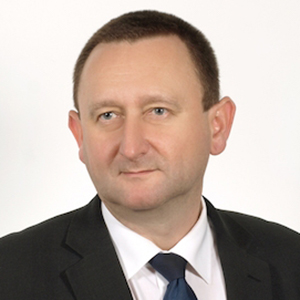
dr hab. inż. Paweł Popielski, prof. PW, Politechnika Warszawska
Warsaw University of Technology professor, hydrotechnician. A graduate of the Warsaw University of Technology in the hydrotechnical construction speciality. From 2014, head of the Water Construction and Hydraulics Department, until 2016 director of the Center for Geo and Hydrotechnical Analysis, Institute of Applied Research PW. Professionally working on: application of advanced numerical simulations in the following problems: geotechnics, hydrotechnics and environmental engineering; assessment of the technical condition of the facilities based on the monitoring and compliance of the measurement data with the results of mathematical modeling; analysis of the impact of deep foundations on building structures and groundwater in the urbanized environment and setting limit values for monitoring; verification of parameters adopted in mathematical modeling; using modern measurement methods (e.g. laser scanning, thermomonitoring) to generate data and verify the results of mathematical modeling; taking into account in the calculations and analysis regarding the safety of building structures, changes in groundwater relations and phenomena occurring in the ground, caused by filtering water (erosion, suffosion, colmatization). Co-organizer and performer of the first leak tightness measurements in Poland using the thermomonitoring method.
Diagnostics, assessment of technical condition and monitoring of large-diameter sewage collectors
In recent years, many new trenchless projects and modernization of underground infrastructure of large cities have been carried out. Execution of new facilities, especially in a strongly urbanized environment, is related to the impact of nearby building objects and may cause a change in water and ground conditions. Diagnostics and assessment of the technical condition of the collectors require conducting multi-criterial, complex analyzes (often going beyond the standard recommendations) and the use of modern measurement techniques to increase the safety of their operation. In carrying out analyzes, you can use both the design and operation stages, numerical calculations to determine displacements and the location of measurement points and the selection of monitoring methods. During the occurrence of problems in the operation of objects it is important to carry out, using modern measurement techniques (eg geophysics), assess the condition of the structure and the surrounding soil, determine the current values of the parameters of the materials and a very thorough analysis of various factors that could affect the emergence of an emergency. The paper will present experiments based on technical condition evaluation of existing large-diameter sewage collectors, methods of diagnosing causes of operational problems by means of modern measurement techniques and numerical models, reflecting local geotechnical conditions and existing infrastructure.





